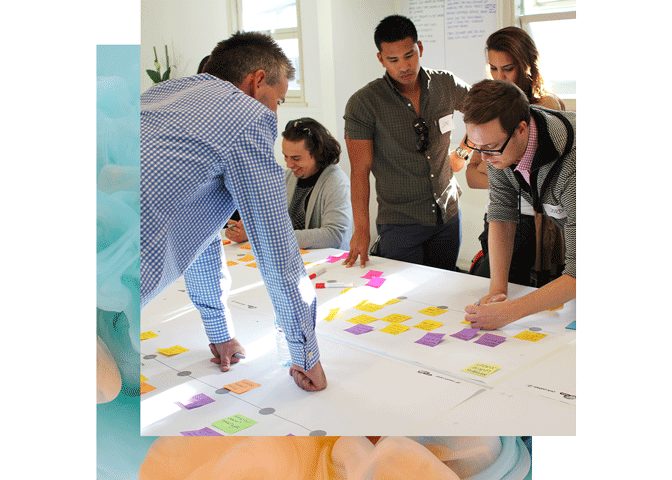
Enterprise Software Build: Maximise Digital ROI
Transform enterprise software implementations from expensive experiments into revenue-generating platforms.
Are your customers set up to succeed?
Do you offer to design and deliver a consistent customer experience across every platform ecosystem? We help you promise and deliver outcomes through your technology platform that are ambitious but achievable.
Successfully Navigate Commercial Reality Whilst Delivering Innovation
Senior enterprise software leaders face mounting pressure to balance genuine technological possibilities with immediate business needs. Your clients demand recommendations grounded in commercial viability solutions with the highest probability of improving customer adoption, user engagement, and measurable business outcomes.
The challenge isn't building sophisticated software; it's ensuring enterprise customers can successfully implement, adopt, and extract value from complex technology investments. This requires a partner who understands both technical capabilities and the human dynamics that drive enterprise software success.
Delivering Commercially Grounded, Human-Centred Enterprise Solutions
Every recommendation we develop maintains dual focus: commercial viability and human-centred design principles. This approach ensures you understand precisely what enterprise customers need whilst identifying the prioritised steps required to achieve sustainable implementation success.
Our methodology transforms abstract customer requirements into actionable strategic priorities, enabling enterprise software providers to deliver transformations that genuinely improve business outcomes rather than simply deploying impressive technology capabilities..
Are Your Enterprise Customers Positioned for Success?
Digital transformation initiatives often focus on technical capabilities whilst overlooking the human factors that determine success or failure. Enterprise software providers need more than robust platforms they need customer experience strategies that ensure consistent, valuable interactions across every ecosystem touchpoint.
Our approach helps you design and deliver ambitious yet achievable outcomes through your technology platform. We transform complex enterprise software rollouts into strategic advantages that drive measurable customer success and sustainable revenue growth.
Our Enterprise Software Customer Experience Approach
We combine comprehensive customer research, proven design thinking methodologies, and commercial pragmatism to deliver the most complete understanding of your enterprise customer landscape. Together, we navigate complicated and costly digital transformation propositions by focussing on what drives real adoption and sustained engagement.
Our process leverages extensive experience in enterprise user research, needs discovery, and developing prioritised implementation roadmaps that balance innovation with practical business constraints. We understand that successful enterprise software deployment requires more than technical excellence—it demands deep insight into organisational dynamics, user workflows, and change management realities.
Make great customer experience a reality
We listen to your commercial objectives and then collaborate with you to create and design real customer offers that succeed. We then communicate our design blueprints and user stories to your technology and business teams, who produce, launch and operate them
1. Identify promising opportunities
We help you identify the most promising opportunities for your business, products and team
2. Develop clear, actionable strategies
We help you develop ambitious but highly actionable plans to make your business goals a reality.
3. Maximise Loyalty and Retention
We help you develop and execute strategies that will see you keep more of your customers for longer.

Use Cases
Customer Champions
Empower your customer champions with the insights, tools, and support they need to lead initiatives, improve engagement, and build lasting loyalty.
Enterprise Software Build
Guide enterprise software builds with customer insight and design thinking to ensure technology delivers real value for users and the business.
Senior Organisational Leaders
Help senior organisational leaders navigate disruption, align strategy with customer needs, and deliver growth through evidence-based transformation.
AI Strategy Implementation
TTurn AI from ambition into execution. We help you design, pilot, and embed AI strategies that align with business goals, improve efficiency, and deliver measurable ROI.
Operation Leaders
Equip operation leaders with customer insight and practical frameworks to improve performance, streamline delivery, and lift customer outcomes
Local Government
Support local government teams to design citizen-centred services, build community trust, and deliver measurable improvements in service delivery
Meet Damian
As Proto CEO, Damian is responsible for driving our clients growth initiatives. He has a wealth of local and international experience with companies such as Diageo, Fosters and Telstra in senior management roles as well as co-founding Proto 14 years ago and leading over 200+ projects.
Ready to build customer engagement champions in your business?
Book a session with our team to train and empower champions who can lead customer projects, lift loyalty, and deliver measurable growth.






